Title Page
ANSI/IEEE Std 802.11, 1999 Edition
Introduction to ANSI/IEEE Std 802.11, 1999 Edition
Participants
CONTENTS
1. Overview
1.1 Scope
1.2 Purpose
2. Normative references
3. Definitions
4. Abbreviations and acronyms
5. General description
5.1 General description of the architecture
5.2 Components of the IEEE 802.11 architecture
5.3 Logical service interfaces
5.4 Overview of the services
5.5 Relationships between services
5.6 Differences between ESS and IBSS LANs
5.7 Message information contents that support the services
5.8 Reference model
6. MAC service definition
6.1 Overview of MAC services
6.2 Detailed service specification
7. Frame formats
7.1 MAC frame formats
7.2 Format of individual frame types
7.3 Management frame body components
8. Authentication and privacy
8.1 Authentication services
8.2 The Wired Equivalent Privacy (WEP) algorithm
8.3 Security-Related MIB attributes
9. MAC sublayer functional description
9.1 MAC architecture
9.2 DCF
9.3 PCF
9.4 Fragmentation
9.5 Defragmentation
9.6 Multirate support
9.7 Frame exchange sequences
9.8 MSDU transmission restrictions
10. Layer management
10.1 Overview of management model
10.2 Generic management primitives
10.3 MLME SAP interface
10.4 PLME SAP interface
11. MAC sublayer management entity
11.1 Synchronization
11.2 Power management
11.3 Association and reassociation
11.4 Management information base (MIB) definitions
12. Physical layer (PHY) service specification
12.1 Scope
12.2 PHY functions
12.3 Detailed PHY service specifications
13. PHY management
14. Frequency-Hopping spread spectrum (FHSS) PHY specification for the 2.4 GHz Industrial, Scient...
14.1 Overview
14.2 FHSS PHY-specific service parameter lists
14.3 FHSS PLCP sublayer
14.4 PLME SAP layer management
14.5 FHSS PMD sublayer services
14.6 FHSS PMD sublayer, 1.0 Mbit/s
14.7 FHSS PMD sublayer, 2.0 Mbit/s
14.8 FHSS PHY management information base (MIB)
14.9 FH PHY characteristics
15. Direct sequence spread spectrum (DSSS) PHY specification for the 2.4�GHz band designated for ...
15.1 Overview
15.2 DSSS PLCP sublayer
15.3 DSSS physical layer management entity (PLME)
15.4 DSSS PMD sublayer
16. Infrared (IR) PHY specification
16.1 Overview
16.2 IR PLCP sublayer
16.3 IR PMD sublayer
16.4 PHY attributes
Annex A—Protocol Implementation Conformance Statement (PICS) proforma
A.1 Introduction
A.2 Abbreviations and special symbols
A.2.1 Status symbols
A.2.2 General abbreviations
A.3 Instructions for completing the PICS proforma
A.3.1 General structure of the PICS proforma
A.3.2 Additional information
A.3.3 Exception information
A.3.4 Conditional status
A.4 PICS proforma—ISO/IEC 8802-11: 1999
A.4.1 Implementation identification
A.4.2 Protocol summary, ISO/IEC 8802-11: 1999
A.4.3 IUT configuration
A.4.4 MAC protocol
A.4.5 Frequency-Hopping PHY functions (continued)
A.4.6 Direct sequence PHY functions (continued)
A.4.7 Infrared baseband PHY functions (continued)
Annex B—Hopping sequences
Annex C—Formal description of MAC operation
C.1 Introduction to the MAC formal description
C.1.1 Fundamental assumptions
C.1.2 Notation conventions
C.1.3 Modeling techniques
C.2 Data type and operator definitions for the MAC state machines
C.3 State machines for MAC stations
C.4 State machines for MAC access point
Annex D—ASN.1 encoding of the MAC and PHY MIB
Annex E—Bibliography
E.1 General
E.2 Specification and description language (SDL) documentation



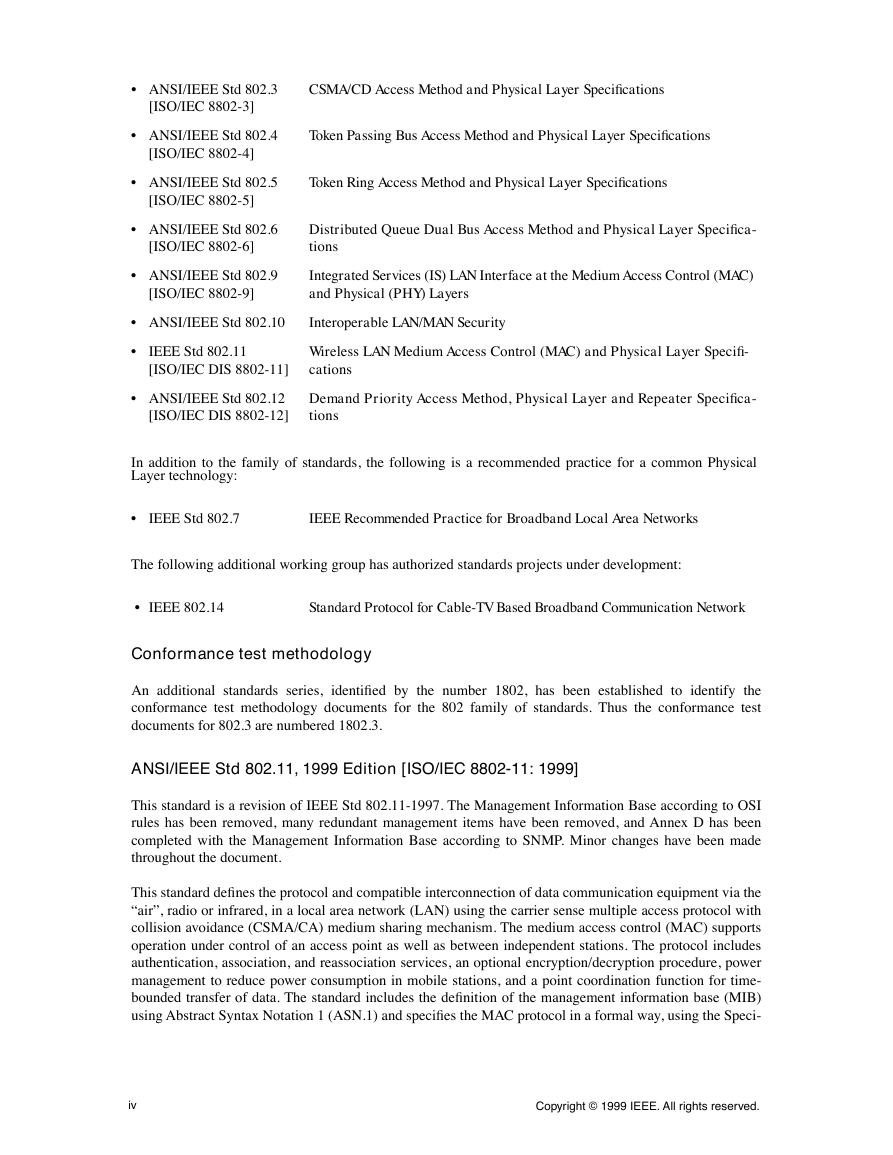
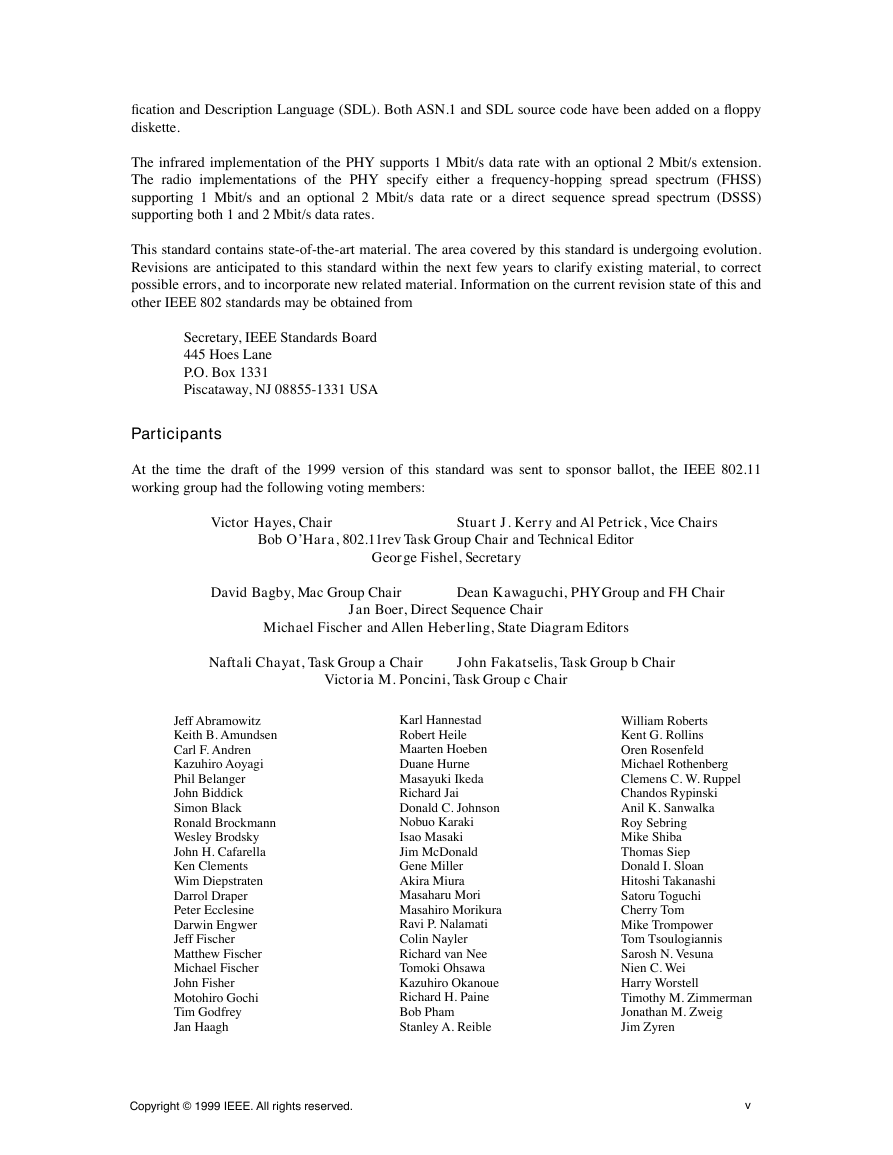
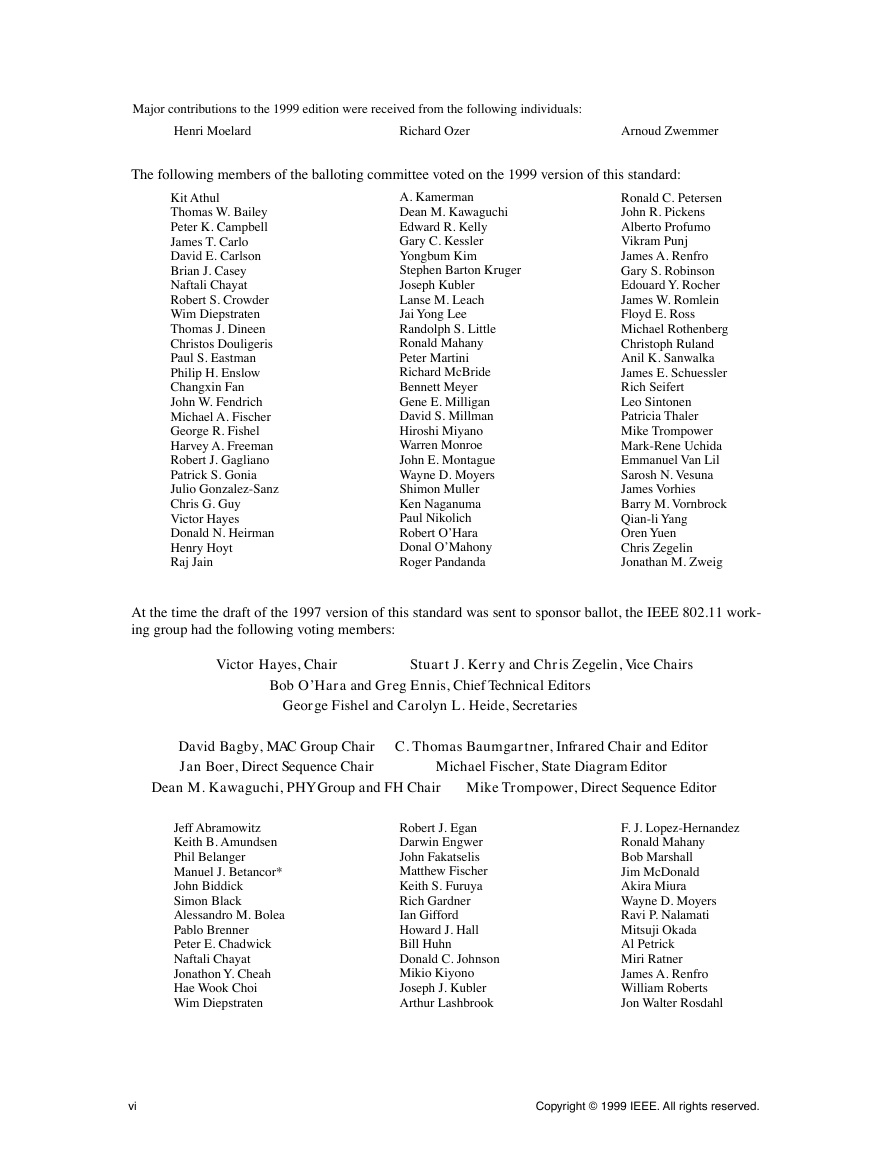
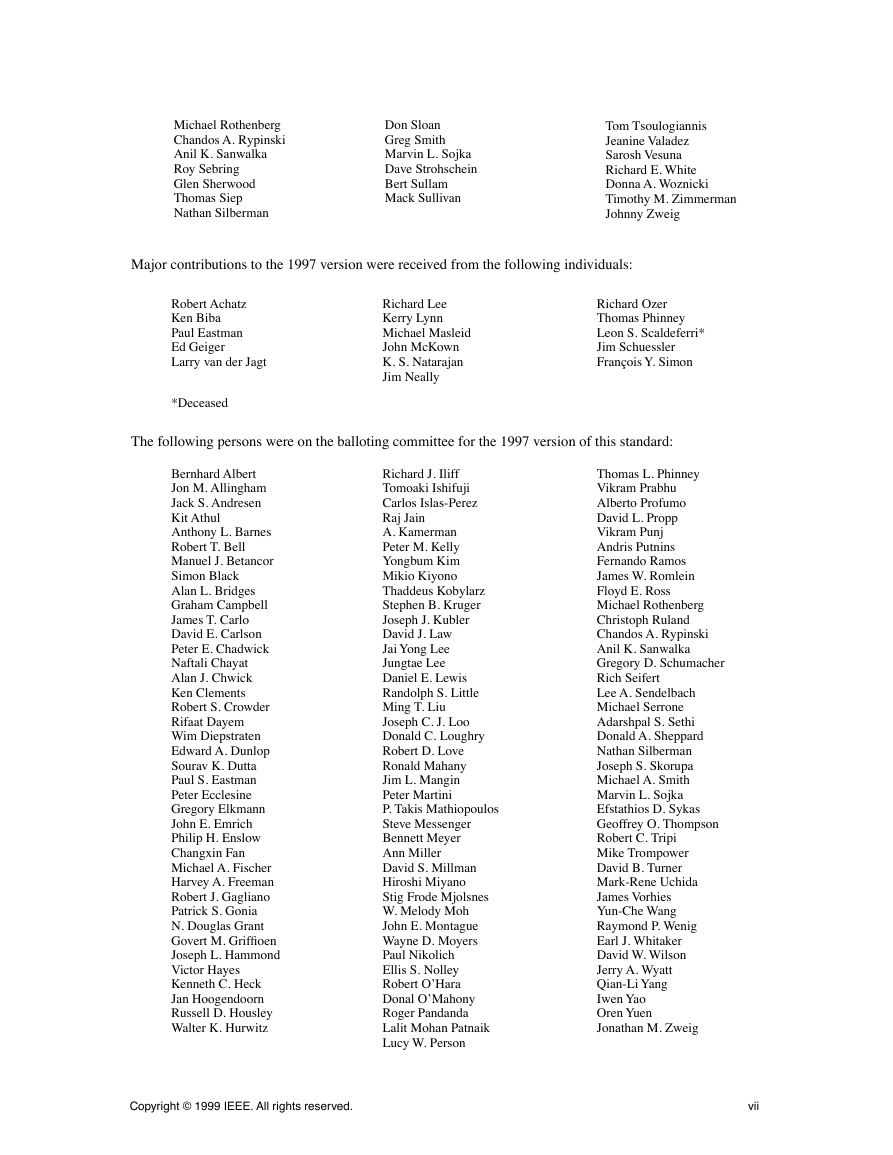
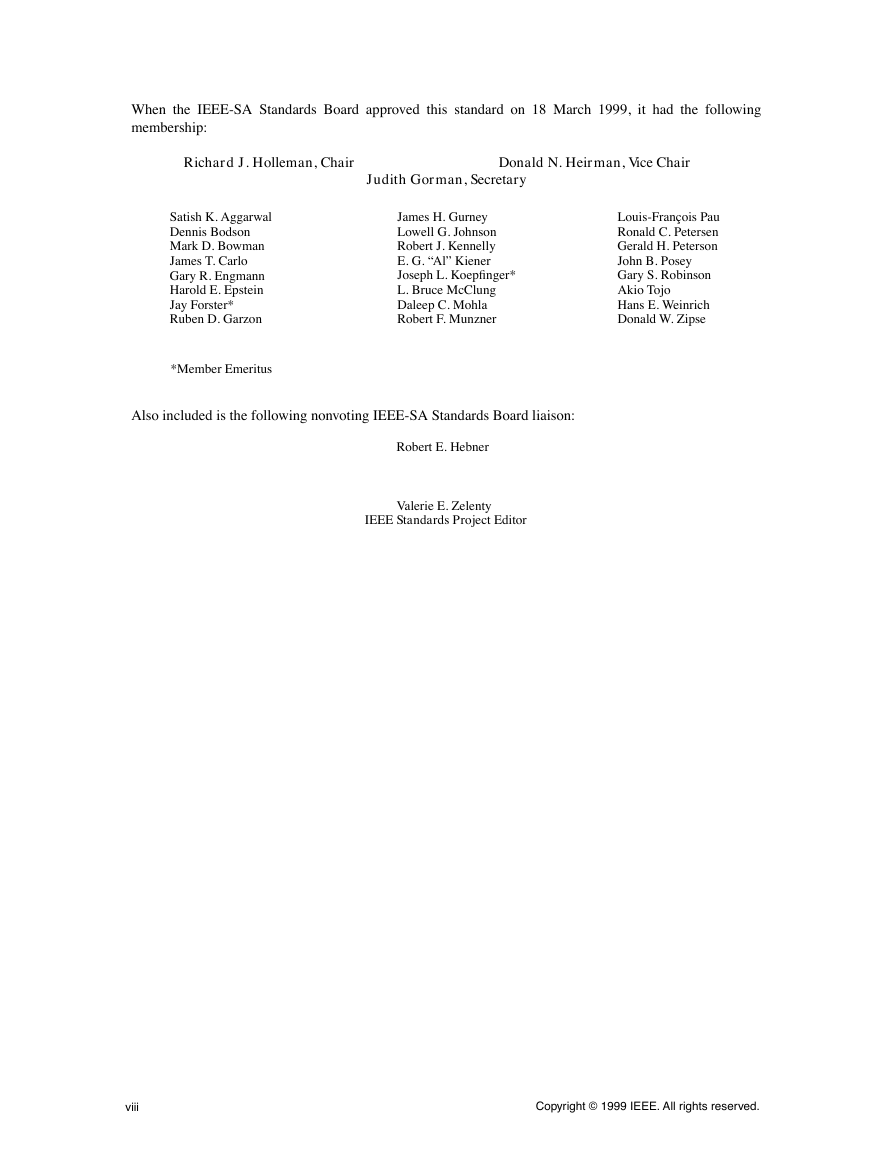








 2023年江西萍乡中考道德与法治真题及答案.doc
2023年江西萍乡中考道德与法治真题及答案.doc 2012年重庆南川中考生物真题及答案.doc
2012年重庆南川中考生物真题及答案.doc 2013年江西师范大学地理学综合及文艺理论基础考研真题.doc
2013年江西师范大学地理学综合及文艺理论基础考研真题.doc 2020年四川甘孜小升初语文真题及答案I卷.doc
2020年四川甘孜小升初语文真题及答案I卷.doc 2020年注册岩土工程师专业基础考试真题及答案.doc
2020年注册岩土工程师专业基础考试真题及答案.doc 2023-2024学年福建省厦门市九年级上学期数学月考试题及答案.doc
2023-2024学年福建省厦门市九年级上学期数学月考试题及答案.doc 2021-2022学年辽宁省沈阳市大东区九年级上学期语文期末试题及答案.doc
2021-2022学年辽宁省沈阳市大东区九年级上学期语文期末试题及答案.doc 2022-2023学年北京东城区初三第一学期物理期末试卷及答案.doc
2022-2023学年北京东城区初三第一学期物理期末试卷及答案.doc 2018上半年江西教师资格初中地理学科知识与教学能力真题及答案.doc
2018上半年江西教师资格初中地理学科知识与教学能力真题及答案.doc 2012年河北国家公务员申论考试真题及答案-省级.doc
2012年河北国家公务员申论考试真题及答案-省级.doc 2020-2021学年江苏省扬州市江都区邵樊片九年级上学期数学第一次质量检测试题及答案.doc
2020-2021学年江苏省扬州市江都区邵樊片九年级上学期数学第一次质量检测试题及答案.doc 2022下半年黑龙江教师资格证中学综合素质真题及答案.doc
2022下半年黑龙江教师资格证中学综合素质真题及答案.doc